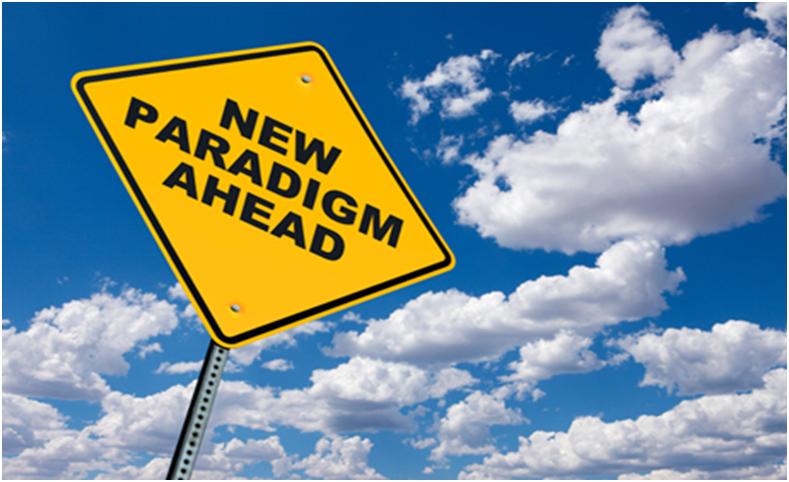Why do we see so many major conflicts in churches? Why, in churches with sincere, God-loving believers, do we see such resistance to leaders who want to lead the church to growth? The answer party lies in the clashing of paradigms.
A paradigm can be defined as the “rules of the game”. When everyone understands the “game” and its “rules,” a sense of order is experienced by players. The rules tell players how to “see” the game and what to do to be successful/accepted. They define the boundaries of the corporate way of seeing how the game should be carried out. In church life, the more successful a member is in using the existing paradigm, the more threatened he or she will be by a new paradigm. Therefore, resistance can be predicted when a new paradigm is introduced that threatens the viability of the existing way of doing things. This is true even when both paradigms have as their stated purpose to make more and better disciples.
- The only justification for a change of rules (new paradigm), is when the old paradigm is failing to produce the desired results. It may have served well in the past but, where paradigms clash, the limitations of the current paradigm are revealed. Upon analysis, it may be discovered that the present way of doing things is ineffective in making more and better disciples. At this point, a system is ripe for a new paradigm. A leader (pastor) in this situation needs to develop “eyes to see” that a paradigm clash can be a symptom of the ineffectiveness of the old rules to meet the needs in the new opportunity.
- Another class of paradigms can be seen, as Peter Drucker points out, when there is incongruity between reality as it actually is and reality as it is believed it “ought to be”. Again, this provides an opportunity to see with new eyes. For instance, many congregations “see” those they are trying to reach in the community as living in traditional family units where the man works and the wife is a homemaker. Thus, the needs of working women, single parent families and single adults are not part of their paradigm when planning ministries. There is often an implied or expressed belief that people ought to live in traditional family units. Therefore, ministries for working women and pre-school ministries for their children are not a high priority, because there exists an enormous incongruity between the perceived reality that guides and shapes the church’s efforts and the actual reality that determines the needs of the families within reach of the church.
These needs demand new rules and visionary leaders who take responsibility for systematic analysis of the opportunities in their ministry situation. They develop “eyes to see” these opportunities where paradigms clash. They understand the vested interest in the old paradigm, but they also understand the need to be firm in developing new paradigms as opportunities develop for making more and better disciples of Jesus Christ.
Leading Your Church through a Paradigm Transition
Before you start this journey, spend some time to ask the following:
- What kind of picture of the church do you have for the future?
- What will it take to move from here to where you want to go? – “transition paradigms”
- What kind of issues will you face when you start to move?
We have to shift paradigms (the way we see things) as we move to a more effective church mission in the 21st century.
- In leadership and organization – Matt. 9:1-17; Acts 6:17
- In vision and mission – Matt. 28:19-20; Acts 8:14-25; 13_1-3
Examples of paradigm shifts from church history:
- 2nd and 3rd century – clergy/laity distinction
- 4th Century – Constantine/church propped up by culture
- 16th Century – The Reformation restoring the priesthood of all believers
- 20th Century (first half) – Pentecostalism. God bypassed the clergy to empower the laity with the Holy Spirit.
- 20th Century (second half) – Mega Church
- 21st (early) – Organic/missional Church
How do we know when we need a new paradigm? Dr Win Arn asks four questions that can help in this situation
- Are you satisfied with the results you are achieving?
- Does your paradigm adequately deal with the obstacles you encounter in pursuit of your mission?
- If you could start from scratch would you do it the way you are now?
- Would non-professionals or newcomers adopt the same methodology?
Paradigm shifts that are necessary so that the Church can become effective in mission:
- Top-down to flat-line
- The issue: Who is empowered for what?
- Typical church perspective: Ministry is top-down, clergy-generated and dominated
- Mission driven church perspective: People empowered for ministry
- Inside to inside-out
- The issue: Where’s the emphasis?
- Typical church perspective: church business
- Mission-driven church perspective: Kingdom business
- Outside to outside-in
- The key issue: Are we operating with potential disciples (mission) in mind?
- Typical church perspective: Come and get it.
- Mission-driven church approach: We’ll meet you where you are
- The edge to the centre
- The issue: Are our lives fragmented or integrated?
- Typical church perspective: God is in the church.
- Mission-driven church approach: God is in the world
Step one: Providing Leadership
“The first task of the leader is to make sure that everybody sees the mission, hears it, and lives it.” – Peter Drucker
- Defining and clarifying vision
- Future gazing – All definitions of vision are future-biased.
- Listening prayer – Where do you go to get a look at the future?
- Casting Vision
- The pastor must become a primary vision caster.
- Anticipating obstacles
- Paint a better future – emphasise the positive aspects of change.
- Pick your battles – don’t win a battle only to lose the war.
- Managing conflict
- Understand your church’s culture. Listen to your people’s stories.
- Understand both the formal/informal leadership structure of your church
- Understand the value of some conflict
- Determine ahead of time your response.
Step two: Developing People
“In Jesus we meet not a presentation of basic ideas about God…but an invitation to join up, to become part of a movement, a people…..We have unconsciously distorted the gospel and transformed it into something it never claimed to be—ideas extracted from Jesus, rather than Jesus with his people.” – Stanley Hauerwas and William Willimon (Resident Aliens)
The central question for a new paradigm: What kind of people are we producing?
Four Institutional assumptions that need to be challenged:
- The educational model serves as the best process for developing people.
- The church of the future recognizes that knowing truth is different from living it.
- Activity signals spirituality
- The church of the future will be simpler.
- Bigger is better.
- The church of the future will focus on excellence in the small units.
- Spirituality can occur without accountability
The church of the future will create an environment that fosters encouragement, venerability, and personal growth through heart-to-heart exchange in small groups.

Colin is the Director of ResourceZone International. He has 30 years of ministry experience as a pastor, college lecturer and consultant/coach to consultants, denominational leaders and local church pastors. He can be reached at info@resourcezoneinternational.com




Comment here